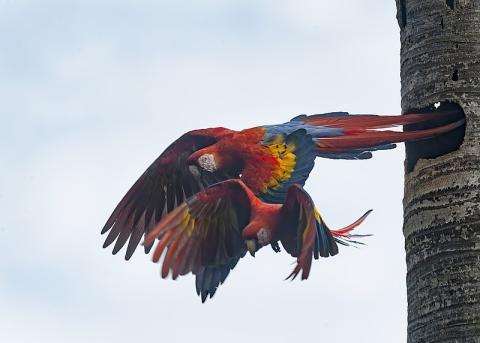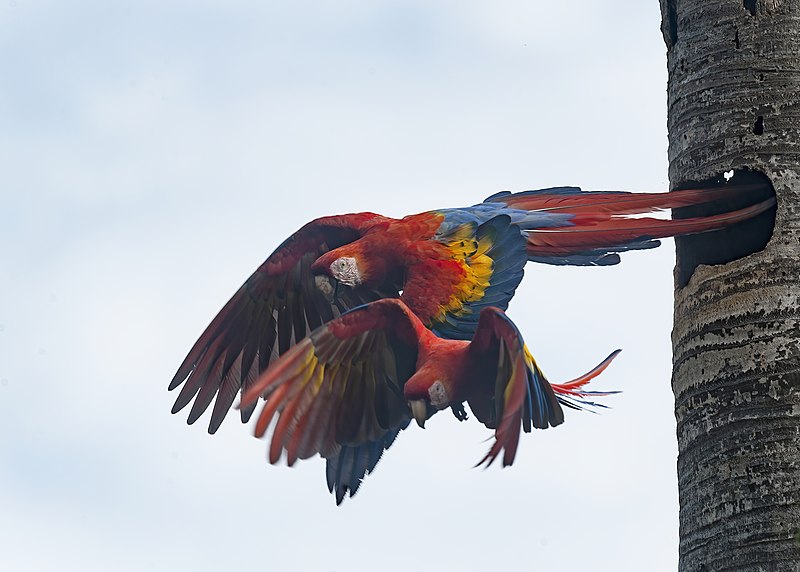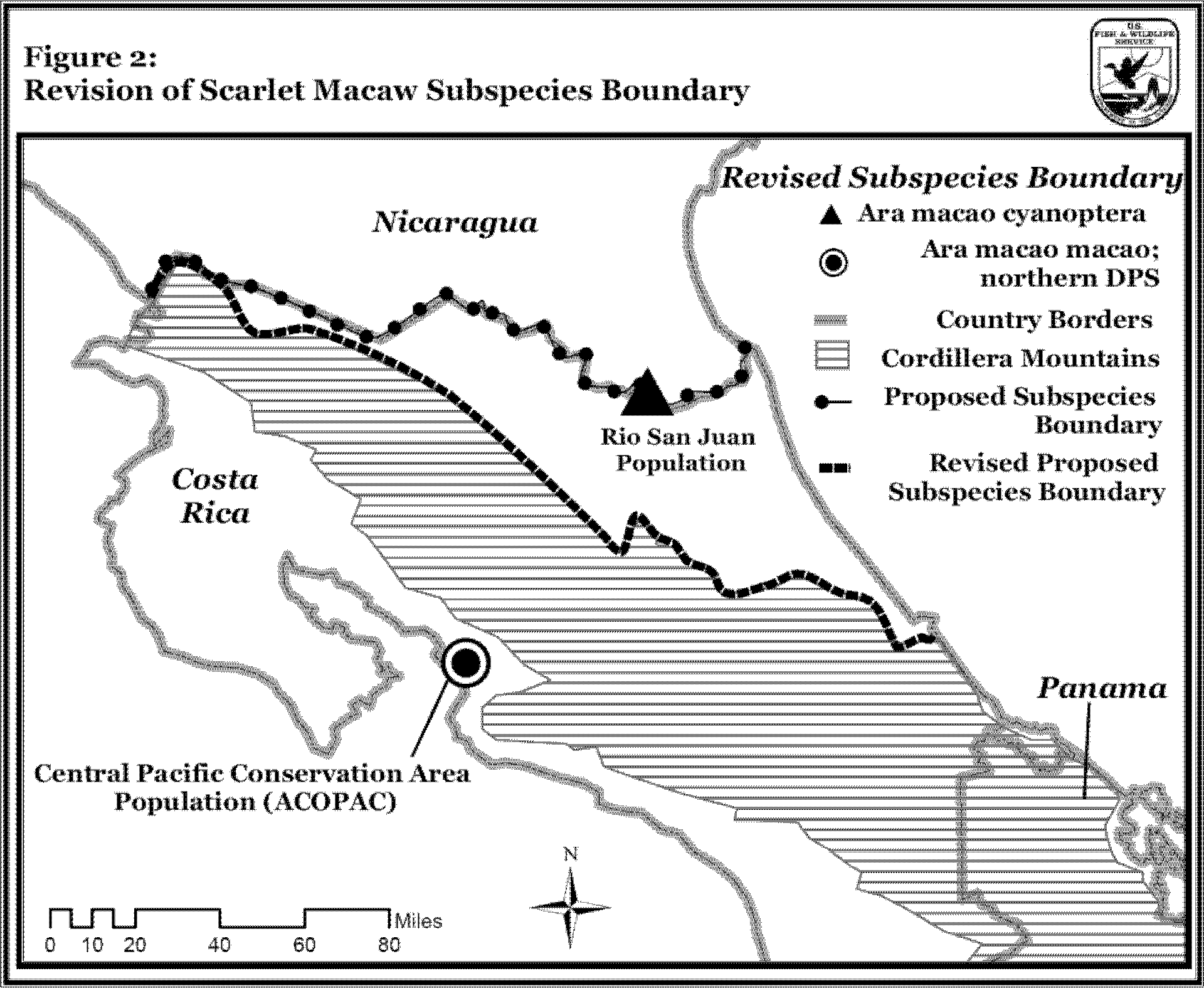Ara macao




Subspecies: Ara macao ssp. macao (Nominate species) , Ara macao sp. cyanoptera
Distribution: Chiapas-Mexico, Peten area of Guatemala, Belize, eastern areas of Honduras, highly fragmented and small populations with patchy distribution as far as the San Juan River and possibly northern Costa Rica.
Beschreibung: Diese Unterart ist größer als die Nominat-Unterart. Der Hauptunterschied besteht in der Färbung der sekundären Flügeldeckenfedern . Diese haben eine gelbe und blaue Spitze. Ara macao ssp. Macao haben gelbe Verstecke mit einem grünen Band, das die gelben von den blauen Spitzen trennt. A. macao ssp. Cyanoptera haben auch längere Flügellängen von durchschnittlich über 400 mm. Flügellänge bei Ara macao ssp. macao liegt im Durchschnitt unter 400 mm.
Description: This subspecies is larger than the nominate subspecies. The main difference is the coloration of the secondary covert wing- feathers. These have a yellow and blue tip. Ara macao ssp. macao have yellow coverts with a green band separating the yellow tips from the blue ones. A. macao ssp. cyanoptera also have longer wing lengths, averaging over 400 mm. Wing length of Ara macao ssp. macao is on average less than 400 mm.
The boundary of this subspecies runs along the Costa Rica-Nicaragua border, but a new proposed subspecies-boundary has been proposed within Costa Rica and essentially follows the Continental Divide in the eastern part (Atlantic Basin). This subspecies extends south of this border into South America. The South American distribution area is extensive and includes the Amazon forest, which extends from Peru east of the Andes to Bolivia.
This species is not commonly observed in Panama. Most sightings occur on the Azuero Peninsula. There is a resident population on the island of Coiba as well as on the smaller peninsula west of the Azuero Peninsula, near the surfing spot of Santa Catalina. Its scarcity is likely due to intense persecution. The feathers are used in costumes at the Cimarronaje festivals. The scarlet macaws are likely more endangered in Panama than the great green macaws.
This species does not appear to be as selective in its breeding practices as the Great Green Macaws. In fact, in Costa Rica, where this species is bred with great success in captivity for release into the wild, reintroduced breeding pairs in Punta Islita prefer to nest in palm trees. However, in the wild it has been observed nesting in red mangrove trees as well as ceiba trees. It feeds on a variety of unripe fruits, buds and seed pods and has been observed eating both insects and other small invertebrates. Reintroduced individuals have learned to eat fruits of the teak tree (Tectona grandis) and the beach almendro (Terminalia catappa), as both trees are not native to Costa Rica. Breeding occurs between December and May.
This species breeds readily in captivity in Costa Rica. The clutch sizes are slightly larger than with Ara ambiguus, often 4 eggs are counted. Birds typically lay 2-4 eggs asynchronously, the incubation period is 26-28 days and chicks fledge approximately 86+/- 4 days after hatching. Macaws, like other parrots, hatch asynchronously. Although an average of three eggs hatch, generally only one or two chicks survive to grow up, largely due to the hunger of the youngest siblings.
As previously mentioned, there are formal captive reproduction efforts aimed solely at reintroducing/repopulating this species into certain selected areas in Costa Rica. There are also private individuals who had kept macaws in enclosures for years and then decided to open the cages to release them. Surprisingly, these birds did not venture far as the owners kept food ready for the birds. They began to reproduce in makeshift nests that these individuals built from metal barrels, hollowed out tree trunks, etc. The nests were placed above the ground in trees, on platforms, etc., but were not at any significant height. Interestingly, these nests were placed in close proximity to each other and all appeared to be used. This observation has also been made in wild macaws in Peru, with good breeding success observed in habitats with high nest density. Ara macao will also easily hybridize with Ara ambiguus, since the named individuals have a large number of hybrids. The Costa Rican government actively discourages hybridization and enforces a regulation that requires hybrids to live in captivity, which has dire consequences for the welfare of these animals.